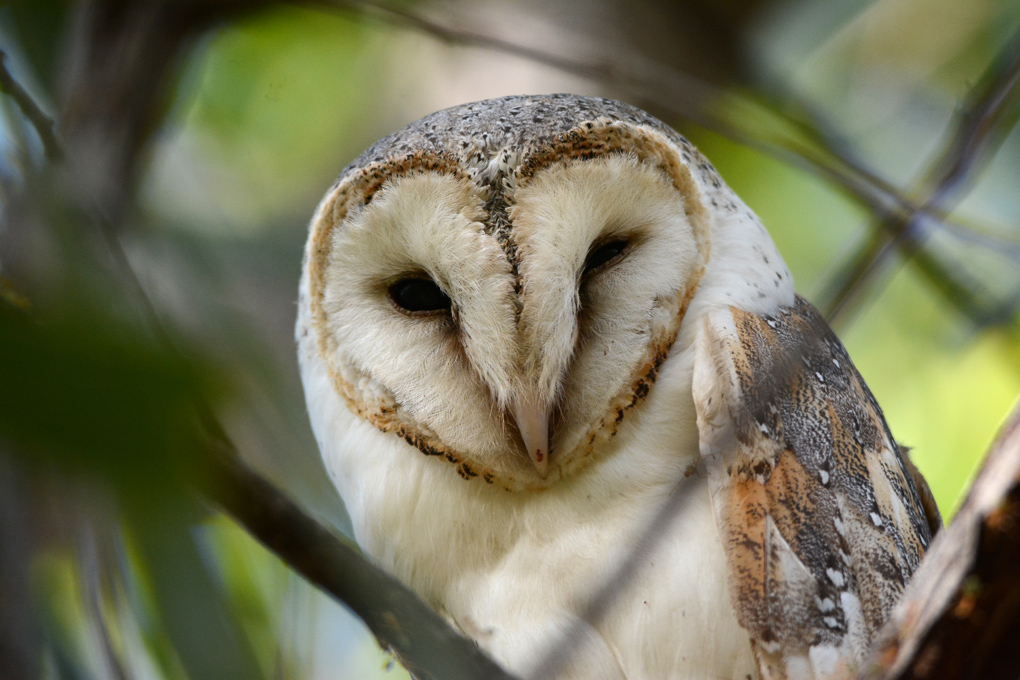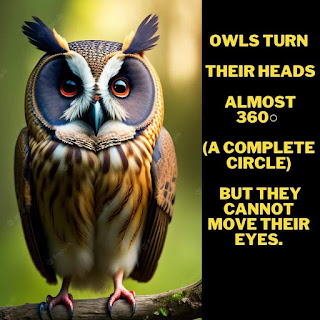Everyone who hears the street knows of animals and myths. They must know at least a bit about owls. Some of those foolish animals are night-blind. Their head rotation has led to many myths about their actions. This blog will share some facts about owl necks. It will also address myths about their eyes.
Anatomy of Owls:

To be able to elaborate on how owls are able to do the above, it becomes relevant to look at the structure of owls. Experts estimate that the necks of owls have a very flexible joint due to their musculature. Unlike many animals and all humans, an owl’s neck is long. It has two extra vertebrae and joints. It also provides them with the ability to rotate their heads at the perfect angle as they desire.
The Myth of Full 360° Rotation:

A common myth about owls is that they can rotate their necks 360°. While people like this idea from books, animated films, or wonderful tales, it is not totally true. They do not turn their heads 360 degrees, as many believe. These birds do have tremendous powers. They lose the ability to turn their bodies almost 270° in some species. But, it’s not a bad loss when one looks at other birds.
The Purpose of Exorcist-like Neck Flexibility:

You may wonder how owls with a super-flexible neck evolved. They can turn it like an exorcist. The primary reason can be traced to hunting ethics and lifestyle in the jungles. Owls are night hunters. Their prey, like mice and insects, can be slippery. To solve this problem, owls move their heads. This gives them a great view of objects in their environment.
Adaptations for Enhanced Vision:

Owls have an unstable eye in the sense that their eyes cannot move in their heads like those of a human being. For this reason, they cannot flex their eyes to follow objects of interest in their vicinity. Thus, they have acquired secondary mechanisms to mitigate this weakness. It lets them expand their view without twisting to scan their surroundings.
How owls achieve incredible head rotation:

Also, the uneven bones, skull, and blood vessels affect the owls’ ability to turn their throats. These adaptations supply more oxygen and nutrients to the brain. They help avoid harm during violent neck movements. Also, there is the plume-like formation around their necks. Their silent, noise-free movements help them pursue prey better.
Limits to Head Turning:
Owls have great flexibility in their necks. But they cannot turn their heads fully. The victim is likely to receive a serious blow or die if one tries to twist the owl’s head beyond the range of motion. The blood vessels in their necks can’t withstand the tension from too much movement.
Eye Movement in Owls:

Despite popular belief, owls can move their eyes but not as flexibly as humans and other animals can. Being determined, they can only move their eyes. This is enough to focus on objects in their view. Their ability to rotate their heads lets them ignore other eye movements. So, they can scan for and focus on their targets.
Why do owls fly silently?
Owls hover in the darkness. They have well-developed wings. These let them fly without noisy flapping. The wings are fitted with feathers. Their frayed edges cut sound. Here are the main reasons:
1. Rounded Feathers (like Fringe Structure)
At the arrowhead tips of an owl’s flight feathers, there are special cilia like barbs. These structures disrupt airflow and reduce turbulence, which cuts flight noise.
2. Velvety Feather Surface
An owl’s feathers are like velvet. They can muffle sound. This also contributes in minimizing further noise when air flows over the feathers.
3. Broad Wings for Gliding
Hawks, like some other birds of prey, have large wings. They flap them as little as possible while flying. Evidently, less flapping results in fewer noises.
4. Low-Speed Flight Adaptation
As you might expect, the owl is well adapted for slow, aerial movement and so can afford to be even more silent. Many other birds, like pigeons and crows, fly with fast, noisy wingbeats. They make a sound by moving the air.
Why Silent Flight Is Important. Faster shout lines would reduce the impact of all these factors. But the implications of attaining silent flight are important. The benefits of silent flight are summarized below.
Owls are night-flying birds. They prefer hunting small rodents, like mice, which use their hearing to find enemies. Their ability to fly and be silent allows them to surround their prey undetected.
It also means the prey does not hear the owl coming; hence, there are high chances of it being captured.
This unusual adaptation makes them among the best nocturnal hunters. Unlike many other birds, they do not prefer high speeds or nimbleness.
Conclusion:
Owls are amazing night hunters. Their ability to rotate their heads makes sense. Like humans, they can’t move their eyes in circles as much. But their ability to turn their heads like exorcists lets them do their job as top predators. Knowing how far an owl can rotate its head clears misconceptions. It makes people admire nature and the unique, valuable owls.


